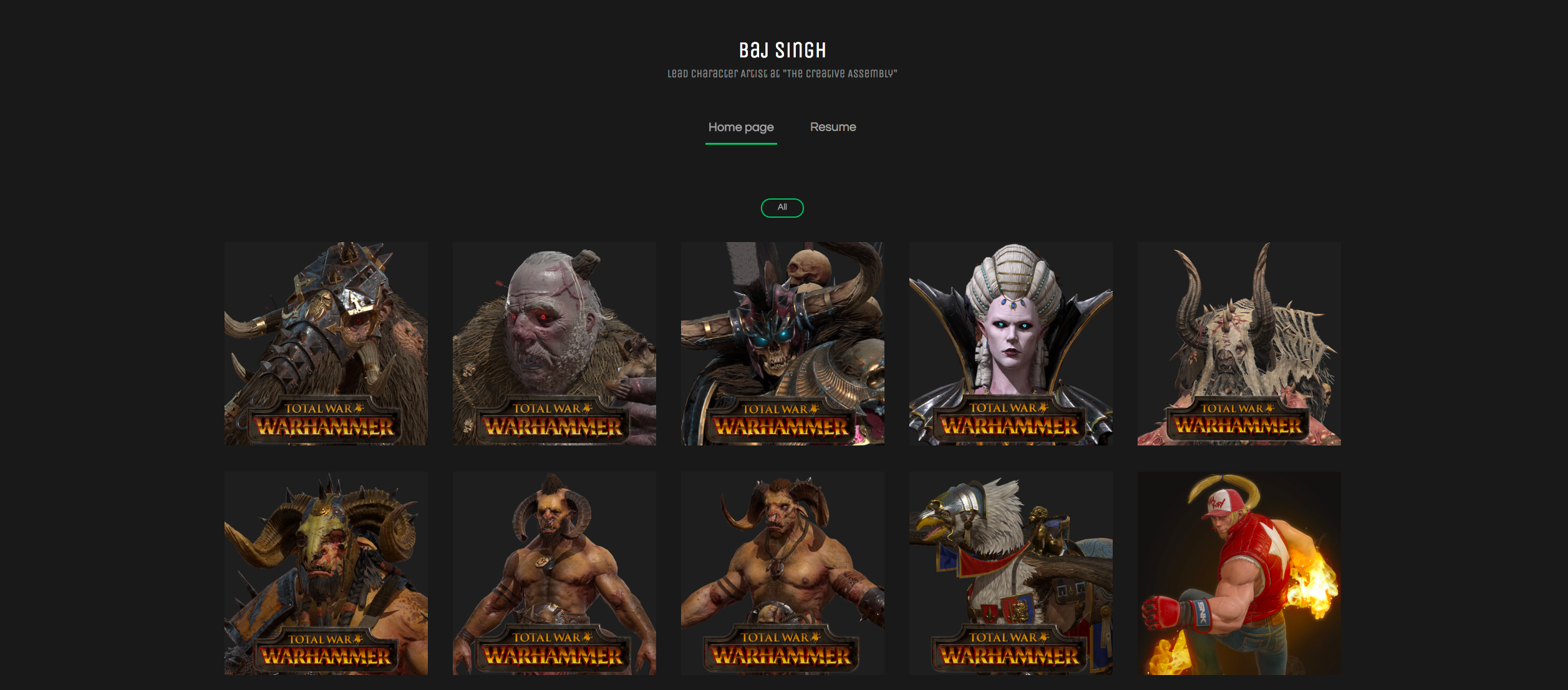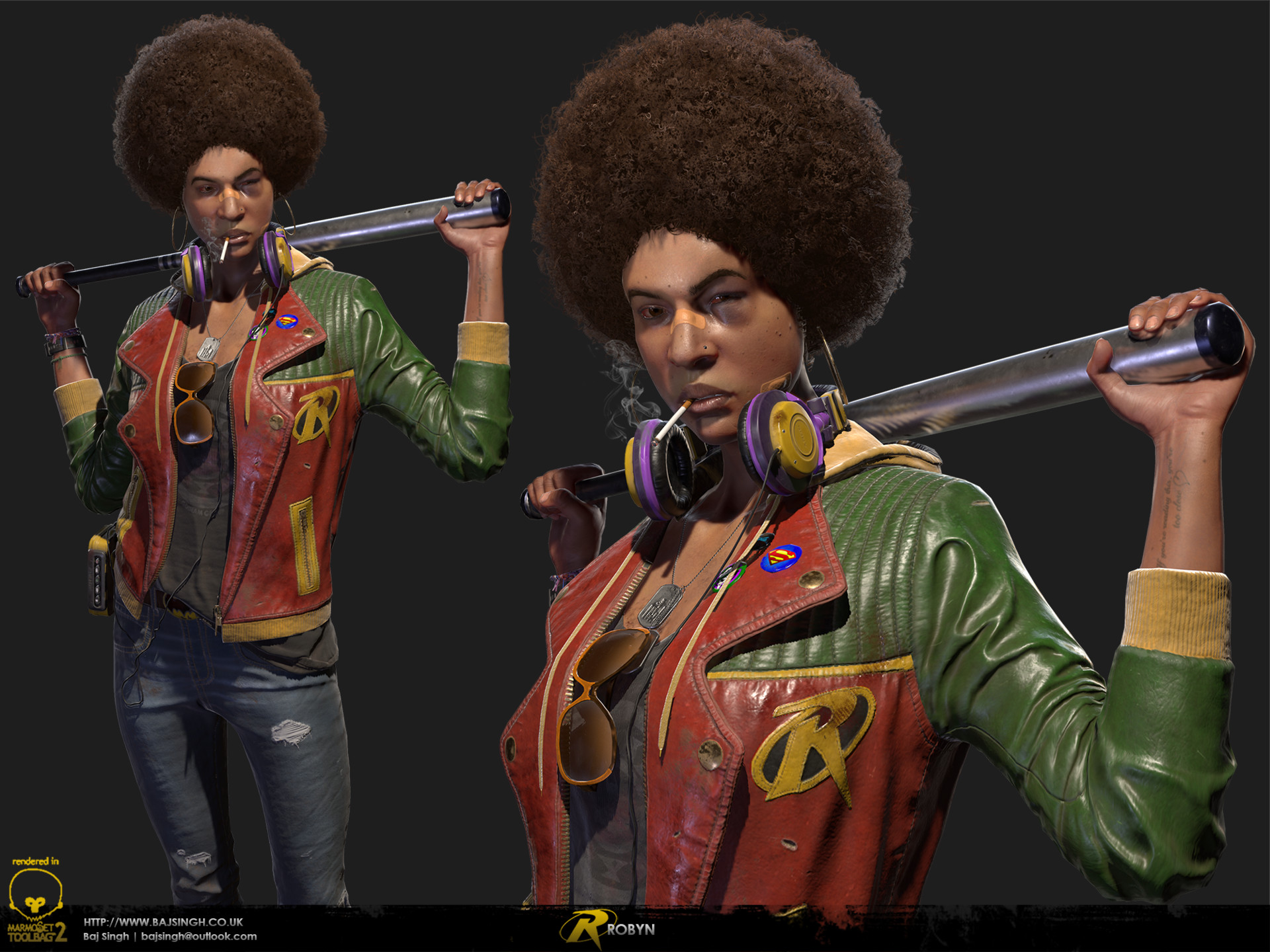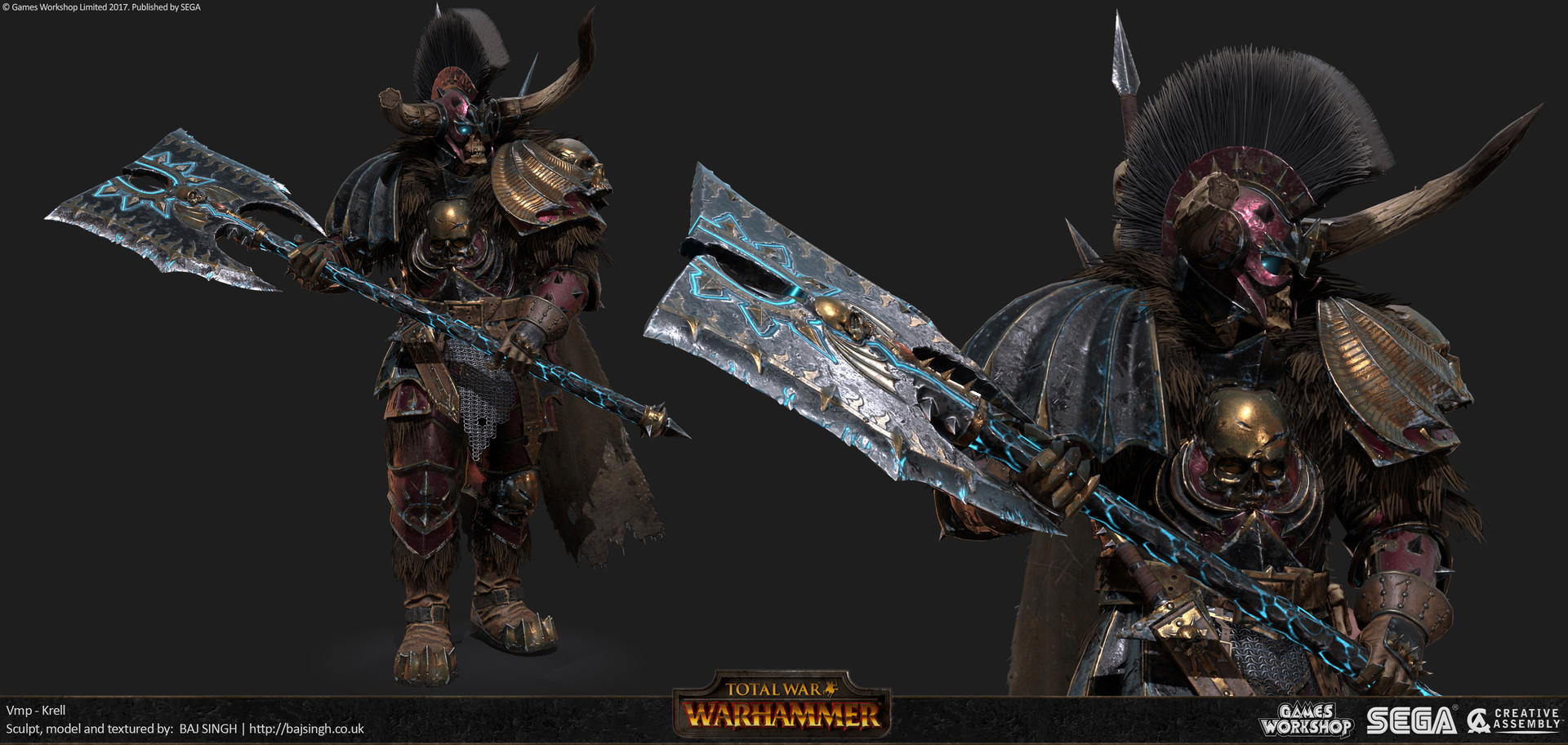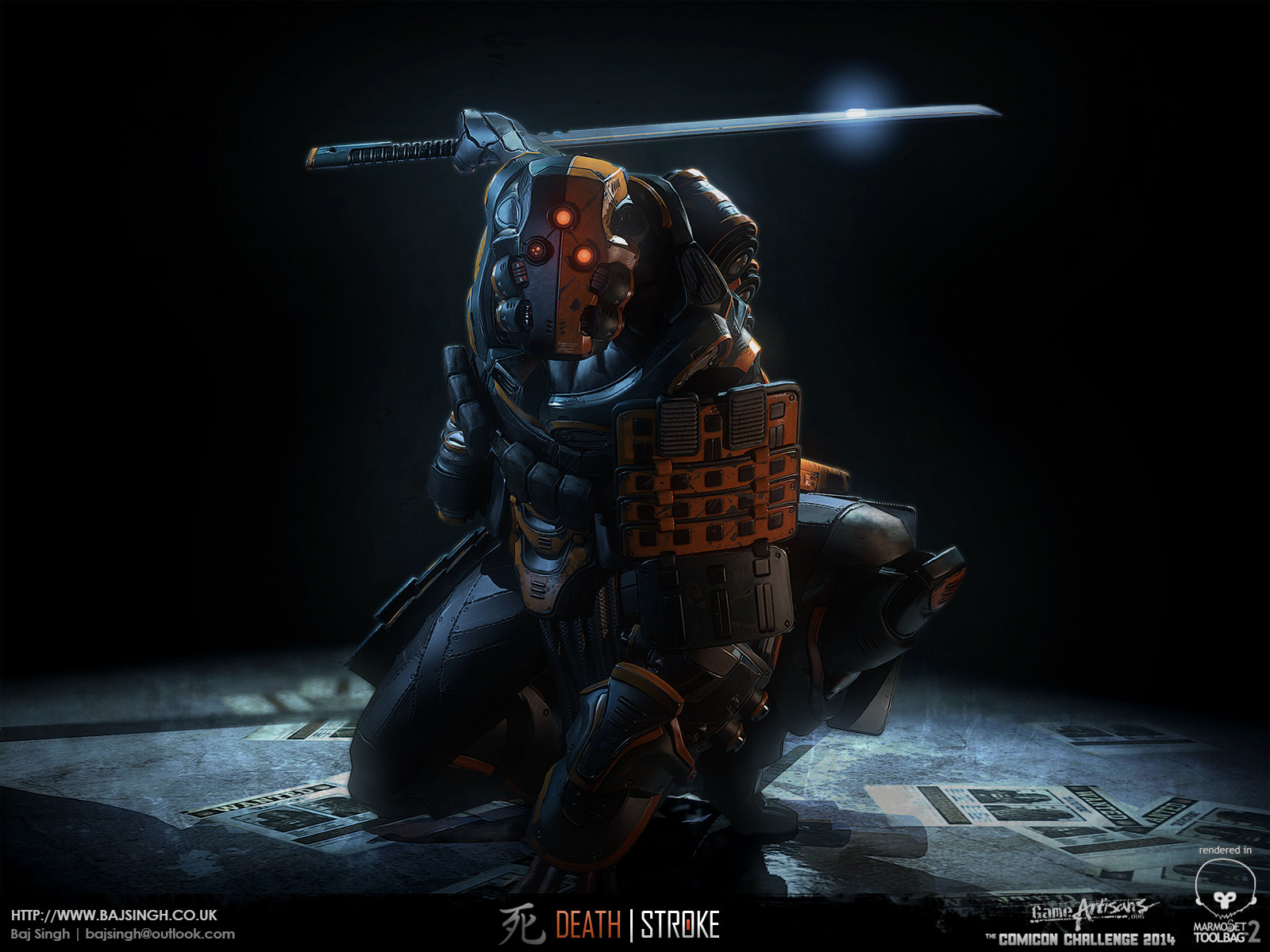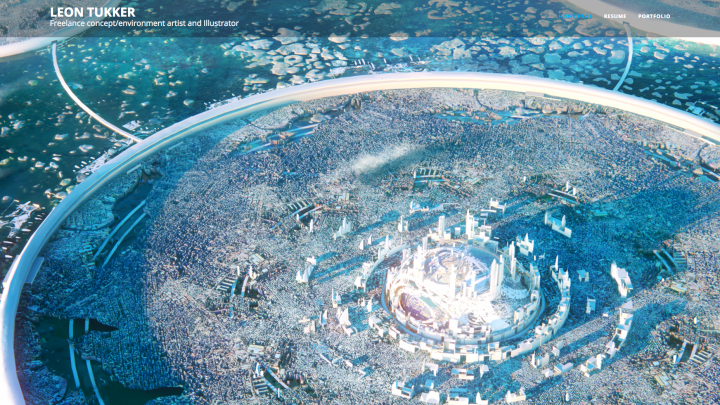Featured Pro Portfolio: Baj Singh
This week’s Featured Pro Portfolio interview is with Creative Assembly Lead Character Artist, Baj Singh. You may also know him as one of he hosts for our ongoing Beyond Human Challenge. For his portfolio website, Baj decided to use the ArtStation Pro Insta theme and customize it in a way that sleekly and uniquely showcases his artwork.
Check out Baj’s ArtStation-powered website.
As one of the hosts for an ArtStation Community Challenge and with his years of experience in the game industry, Baj had a lot of insightful advice to share with us:
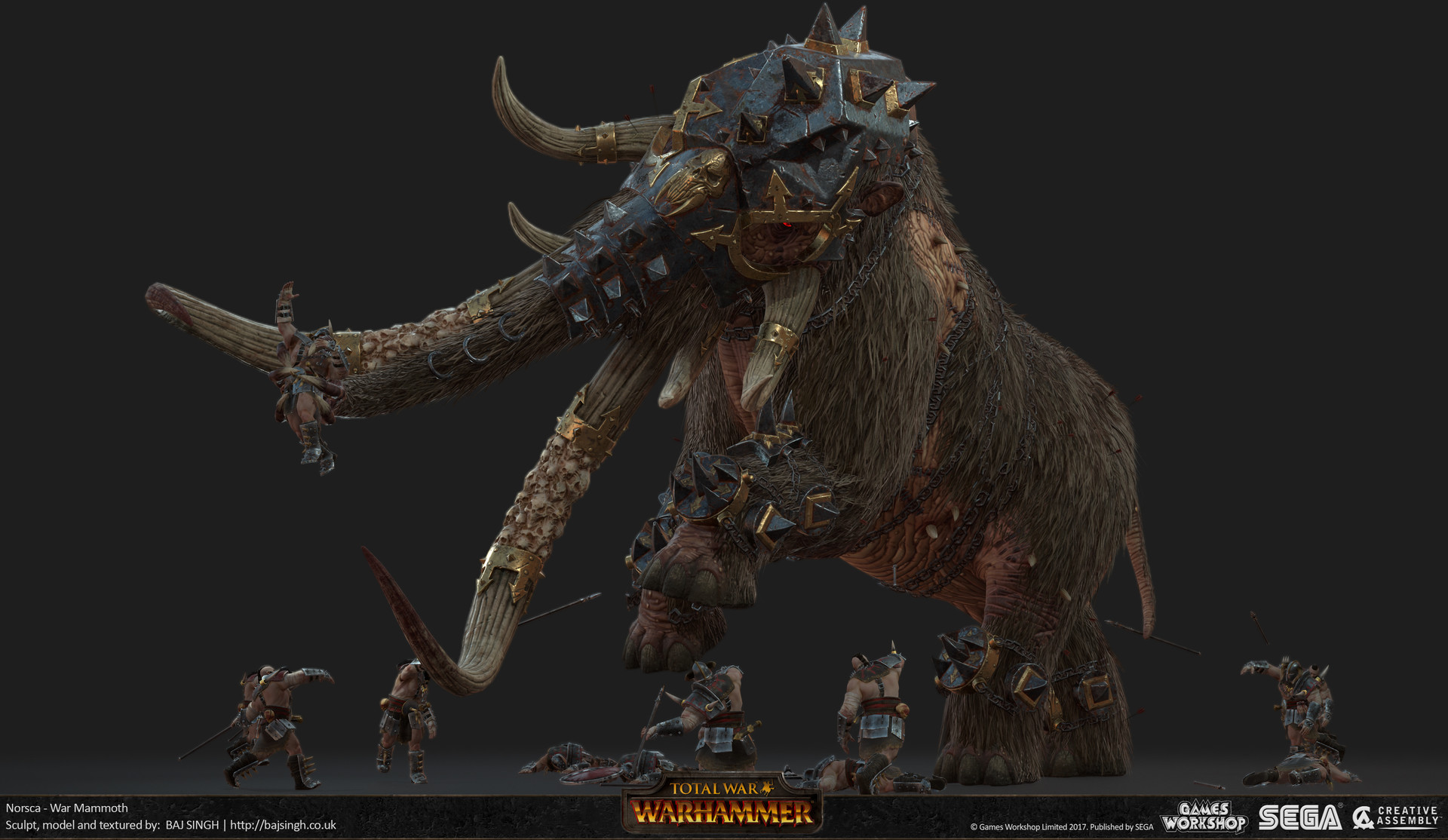 What do you think is the most important skill to demonstrate in your portfolio?
What do you think is the most important skill to demonstrate in your portfolio?
In a portfolio that specifically caters to character art for real-time game production, demonstrating that you have a good understanding of the workflow process from the high poly stage of asset creation (digital sculpting, hard surface modelling) to the production of a functional low poly asset which emphasizes an artist’s ability to produce good topology is incredibly important. This should be efficiently unwrapped and textured to a high degree (depending on your preference, either hand-painted or textured using physically-based rendering methods).
In the case of the above, it’s important to remember that 99% of people will be advertising their work in the hopes of gaining or maintaining employability. Some artists want to work at studios such as Blizzard, Riot, etc where they still focus on traditional hand-painted textures for their major projects whilst others may want to work on incredibly realistic looking games such as Call of Duty, Uncharted, Total War: Warhammer, etc which call upon the artist to know current generation texturing techniques. To some extent (unless you are adamant that you want to work on one style or the other), diversifying your skill set shows your flexibility as an artist and can make you more attractive to perspective employers.
Of course, as a character artist, knowledge and understanding of human anatomy is a must. Even if you prefer stylised character/creature work where in the case of the latter you are using real world anatomy as a reference as opposed to verbatim, you still need a solid understanding of how the body functions, how to use landmarks of the body to identify proportions and muscle placement, etc. For a lot of mammals, animal and creature anatomy closely mirrors human anatomy so good knowledge here is key!
How do you make your work stand out from others?
Diversity and originality. One thing I see a lot when looking at artists pursuing a role in character art is that they feel as though they need to follow a trend of work that already exists (orcs with axes, ladies in tight mech suits, etc). Whilst I don’t take a particular umbrage to this, when (in a hiring position) I see a lot of people producing very similar bodies of work it can become uninteresting fairly quickly. I tend to look for the more interesting pieces of work, either something completely original or a piece that takes an existing concept and puts an interesting spin on it (the piece that I feel showcases this best on my portfolio is “Robyn”).
I often hear that a lot of people say that you should cater your portfolio to the company you wish to work for. Whilst I think this is true to some extent, I think people often take this too literally (and can potentially hamstring your creativity). Instead of trying to reproduce art that you might find in the latest “Total War” game, try taking those conceptual ideas and putting a spin on it. I like hiring creative people who are capable of coming up with radical concepts that I would never had thought of and it will really make you stand out from the crowd.
What kind of experiences/training did you have to do to get to where you are now?
A lot of my training has been self-directed. Before I started working in the industry, I spent most of my spare time learning whatever industry standard programs that I could get my hands on (3D Max, Zbrush, Photoshop, etc). Combining that with online game art forums as well as entering as many 3D art competitions as I could, I found myself learning the tools of the trade as well as getting some great feedback and advice from artists who would later become my peers.
Working at places such as “Jagex” and “Creative-Assembly”, I have managed to work with concept artists, animators and fellow character artists who really helped me to push my abilities further. One of the great things about working in a studio environment is that you are surrounded by people who have a strong desire to improve their art skills as well as learning new techniques. This helped motivate me to continue to keep working on improving my abilities both at work and in my spare time.
Advice for aspiring artists
Working on your artistic ability is only part of the challenge. Improving your desire to learn, to maintain your skill and to keep pushing yourself is what will truly make you great no matter what path you wish to take.
Some artists might learn and pick up skills faster than others, but everyone is capable of reaching the same skill level if they really want to. It’s the iron will that’s going to get you most of the way there.
Just as important however, listen to your peers and learn the difference between confidence and arrogance. A lot of artists genuinely have an innate desire to want to help others develop and their feedback will help you grow your artistic ability as well as your skill to respect and value others opinions.
Also, remember that this is a small industry. Toxic behavior within the art community isn’t appreciated, tolerated and will often be remembered. There is always a very good chance that you will end up bumping into some prominent members of that community when you join a professional environment (especially when you use social media to promote your work).
Above all, have fun! It’s a creative industry and most of us do this because we want our jobs to be our passions. We like making art, we like learning and even though it can sometimes be turbulent, we want to enjoy the ride to achieving our goals (no matter what they might be).
See more of Baj’s work on his ArtStation Pro website. To find out more about ArtStation Pro portfolio websites, click here.
